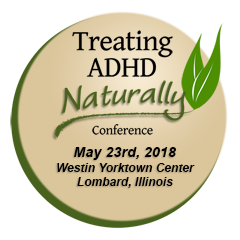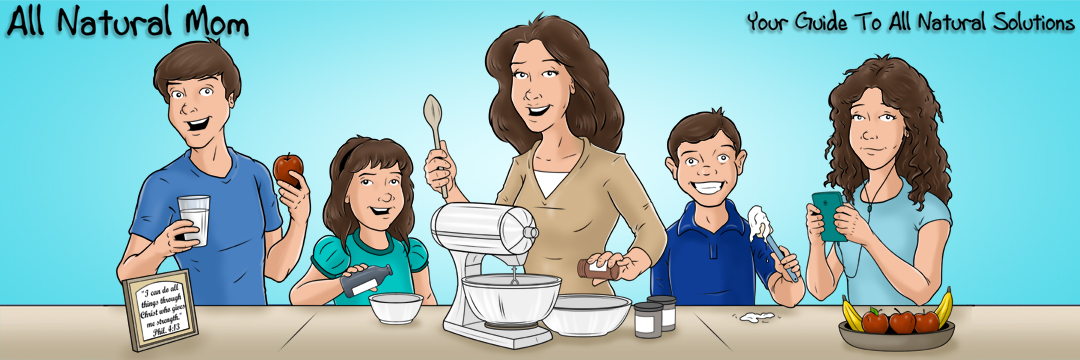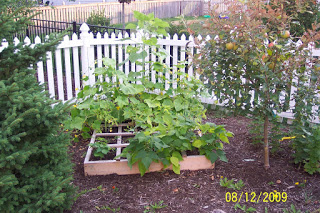(The top is a picture of our garden in the summer. You can see our little apple tree and below it was the start of our raspberry bushes. In the front are green beans and cucumbers are in the back. The big tall thing in the far back is a sunflower that my daughter planted. )
It’s time to start your garden if you haven’t already. I’m no expert gardener, but we started our first organic garden three years ago. The most important part of gardening is your soil. I built up an area that got plenty of sun. Southern exposure is the best, or wherever your plants might get the most amount of sun in your backyard. We dug up the grass in that area and loosened up the soil.
Then, we added several bags of organic gardening soil from Home Depot. Ideally, you want about 6-8 inches of loose soil. I probably had about 4-6 inches. Non-organic soil will have chemical fertilizers added to it.
You can start your seeds indoors if you want. I started mine the end of April. You’ll have to keep them indoors until after the last frost. Then, you can transplant them outside. Home Depot sells containers for seedlings that hold about 36 plants. You have a couple options for your garden.
The top picture shows our square foot garden. Google this. There is a book called “The Square Foot Gardener”, and he has his own web site that will tell you exactly how to build a square foot garden. I like this. It keeps the plants organized and allows you to make the best use of your space. I used a permanent marker to write on the wood what we had planted there and the date they would be ready to be harvested. Use the back or front rows for your tomatoes or cucumbers because they get big and take up a lot of room. You’ll need to use something to steady them as they get bigger. Home Depot sells round tomato cages that I like to use or else I use one long metal thingy that goes along the whole back row. The cucumbers will latch on to anything near them as they grow.
If you read gardening books, it will say you should test the soil for acidity levels and compost, etc. That’s too much work for me. I just bought some organic soil and threw down some organic seeds from Whole Foods or Home Depot. Water and wait. Easy as that. If you plant seeds directly into the soil, you may have to thin the plants, meaning if more than one plant grows up in one spot, you need to move the extras to another location or throw them out. This is especially true with tomatoes. They get really big and you don’t want more than one plant in one spot. The package says to plant a few seeds in one spot just to make sure that at least one grows. But, in my experience, most of them do grow.
That’s the nice thing about starting seeds in the little seedling containers. Once they grow up at least a couple inches, you can transplant only one plant per area. I put a tomato cage around cucumbers, tomatoes, and broccolli when the plants are small, so that I don’t ruin any of the roots when they are bigger and need the support of the cages.
Plant seedlings outside on a sunny day in the morning preferably. Transplant seedlings on a cool afternoon. Don’t plant seeds right before a big thunderstorm or the seeds could get washed up to the surface. You only need to plant them about 1/2 to 1 inch below the soil (read the package). Water very gently/carefully or hand water when the plants are small or not above the soil yet. You’ll have to water more when you first plant the seeds, and then less later, but it tends to rain alot during this time anyway. Plants prefer lukewarm or sun warmed water to cold hose water.
We just got a rain barrel from Home Depot for about $69. It hooks up to your gutter and collects rainwater. It has a lid to keep on in between rains. Then there is a place where you can hook up a hose and then water your garden. Plants much prefer rainwater than our chemical laden, toxic city water.
What to Grow?
Depends where you live and what your family likes to eat. I live in the midwest so we have a short growing season. Last year, we grew the following:
Tomatoes – beefsteak (bigger ones) and roma tomatoes (smaller and yield less)
Cucumbers – plant your tomatoes and cucumbers next to each other
Basil – plant near your tomato and cucumbers. It gives them a better flavor apparently.
Green beans – plant at least a few plants to get enough beans at one time for meals.
Broccolli – these get big and sometimes attract bugs, but we didn’t have any problems. If we didn’t eat a lot of broccolli, I wouldn’t plant these because they take up a lot of room and don’t yield a whole lot. You’ll have to stake these or put a tomato cage around them or they’ll fall over and die as they are growing.
Parsley – sometimes I just leave these in a small pot near my back door b/c I use parsley a lot. When you cut off the leaves, you can expect more to grow in a couple weeks.
Cilantro – these grow fast and mine didn’t seem to grow back like the parsley. I think I needed to dig up and replant seeds to get more. When my cilantro was ready, my tomatoes and jalapeno peppers weren’t near ready so it didn’t work out for my salsa. This year, I may just plant the cilantro later in the summer.
Carrots – these won’t get real big and don’t plant them too close to each other. They grow underground, so you will have to go by the date on the package to know when to pull them up.
Jalapeno peppers – these weren’t ready until late summer and didn’t produce a ton and didn’t get as big as they are in the store, but we got a few for salsa.
Green peppers – these weren’t ready till late summer either (maybe I planted them too late) and the frost got to them before I did.
Blueberries – I bought a blueberry bush a couple years ago. It yields very little and the birds or some other animal always gets to them before I do. I put up a cage around it and it didn’t help. My grandma said birds love blueberries. Oh, well. Happy eating little birds.
Raspberries – Lol. I bought one rasberry bush a couple years ago thinking, I like raspberries. Well, now we have about 50 raspberry bushes. They spread like crazy! I can’t contain them. Luckily, we’re moving next month. Sorry people! Seemed like a good idea. They also have thorns. We do get a handful of raspberries twice a summer from the original bush. The other bushes (more like tall bushy rods), haven’t produced any berries yet. I think the animals stay away because of the thorns.
Apples – Yes, apples. A couple years ago, I told my husband I wanted one peach tree b/c our neighbor had one and they were pretty. We went home from the tree nursery with 6 fruit trees! If you buy one apple tree, you have to buy another one of a different variety in order for them to produce fruit. (Cross pollination or something). So, we now have two apple trees, two peach trees, and two plum trees. We only get fruit on the apple trees so far. We get about 20 apples per tree. Good for pies and such, but not as much for eating right off the tree. I know when the trees get bigger, they are going to be a mess probably. But, they were only $30 per tree and I figured it cost us less to buy our own tree than to pay to go apple picking every year at our local apple farm down the road.
The plum tree we get one plum a year, and my son or daughter pick it off every year before it gets ripe enough. The peach trees haven’t done anything yet, but it looks like we are finally going to get some fruit this year. We see some buds now (after 3 years). I’ve heard that pear trees grow very well in our area.
We tried melons one year, but the I’m thinking the warm season isn’t long enough here. We did get a cantalope that seemed like it was almost ripe, but my son apparently ripped it off the vine and it rotted before we found it. Sometimes the kids are worse than the animals! 🙂 My daughter threw some seeds in the ground from her cantalope and they did grow. We bought watermelon seeds and I think we waited too long to pick it, b/c when we finally did, it was overripe and we couldn’t eat it. I was waiting for it to get bigger, but it must’ve been one of those mini watermelons. Our fruit probably won’t get as big as you see in the store, b/c we don’t use the chemical fertilizers like they do.
What we’re trying new this year:
Onions, peas, and garlic. I don’t have seeds for garlic, but I’m thinking I’ll just throw a garlic clove in the ground and see if it grows. I use garlic all the time.
The first seven things listed above grow very easily. Plant, water, and watch them grow. The rest, may need different soil or climate or something that I don’t feel like researching right now and we don’t eat them much anyway.
Also, I always plant marigold flowers throughout the garden to keep bugs and animals away. They don’t like the smell of the flowers for some reason. I’ve also planted a chamomile plant in my garden and underneath my apple tree. It will supposedly help any ailing plant back to health through its roots. I could probably make tea from the leaves, but haven’t done that yet. It grows back every year.
Don’t plant the same crop in the same place each year. Rotate them around. Certain veggies like green beans, take a lot of minerals out of the soil, so you want to plant something else there the following year like peas (I think) which put minerals back into the soil. Sweet potatoes are also good for the soil but I’m not sure they grow well here. They like hot climates.
There are lots of books on gardening. Too many. I tried starting to read them, but it was way too much information. There is also a form of gardening called “High Brix Gardening.” Google it. Apparently, with this type of gardening, your veggies will not rot after you pick them, and bugs will stay away from the plants. Haven’t had time to look into it yet and we will be moving in May or June, so not sure what’s going to happen with my garden this year. I have plants in pots right now.
Composting – I’ve never added compost or natural fertilizer to my garden, though I know you’re “supposed” to. Just never got around to it. I’ve heard crushed up egg shells are good. My kids are allergic to eggs though so I was afraid to add it, though I doubt it would cause any problems for them. I’ve also heard lime peels are good, and on my bag of epsom salt, it says adding epsom salt to the base of plants helps them grow bigger but I’ve never tried it.
I’ve also learned you should not pick tomatoes when they are green and then let them ripen off the vine. I can’t remember all the terms, but something in the tomato changes and it’s bad for you. But, what do you think they do with the tomatoes you buy in the store? Yep, pick them when they’re green, then let them turn red on their way in a truck to the grocery stores. So, wait till their red (or close to it), then enjoy. This is true of other fruits and veggies as well.
That’s another reason why it is so much better to grow your own fruits and veggies. If you think about it, God didn’t intend for all fruit and veggies to be eaten days and weeks after being picked (though some are OK). In the old days, people grew their own produce and lived off of that, or traded with their local neighbors. It didn’t need to be shipped hundreds of miles or flown overseas. Once a fruit is picked, it’s starts to lose some of its vitamins and minerals. That’s why some people say if your juice has a cap on it, it’s probably devoid of all vitamins and minerals, other than the ones they’ve added to it. That juice could have had fruit in it that was picked a year before and has been sitting on a shelf. That’s why juicing provides so much more health benefits than drinking juice bought from a store in a plastic container.
So, if you’ve never planted a garden, go do it! It’s easy, and makes for less trips to the store in the summer. We always have way more veggies than we can use, so we share with friends and neighbors. The kids love harvesting the veggies and watching them grow. We also don’t use any bug killers. Haven’t really needed to. The first year, we did spray our fruit trees and broccolli with an all natural homemade bug repellant. Not sure if it worked or not. Last year, we didn’t do anything and everything was fine. We made it with onions, garlic, chili pepper, and a couple other things. I found a recipe online.
Anyways, like I said, I’m no expert in this field and I’m sure I’ve done plenty of things wrong, but I do know, whatever you can do at home in your back yard, despite your lack of know-how, is probably ten times better for you to eat than what you’re going to buy in your local grocery store, and it’s really not that hard.
Related Posts:
All Natural Gardening and Lawn Care
Written by Sheri Fortes - Visit Website
Author of "All Natural Mom's Guide to the Feingold Diet"
Follow me on Facebook, Pinterest, and Instagram
The Treating ADHD Naturally Conference is coming back to Chicago May 23, 2018! More details coming soon at www.mothersdetermined.com.





I just read an article from Portland.com on radical homemakers – you totally qualify for that title. Your garden is wonderful. Your ideas, comments and perspective are very helpful. Thanks for posting.
If you grow another blueberry bush it may help with your yield. I think some varieties need to cross pollinate. it doesn't matter if you have two of the same variety or not. I like your garden a lot. I've seen drawings, but not a live picture, so thanks! My container garden last year was too sad for words so I'm aiming higher this year!